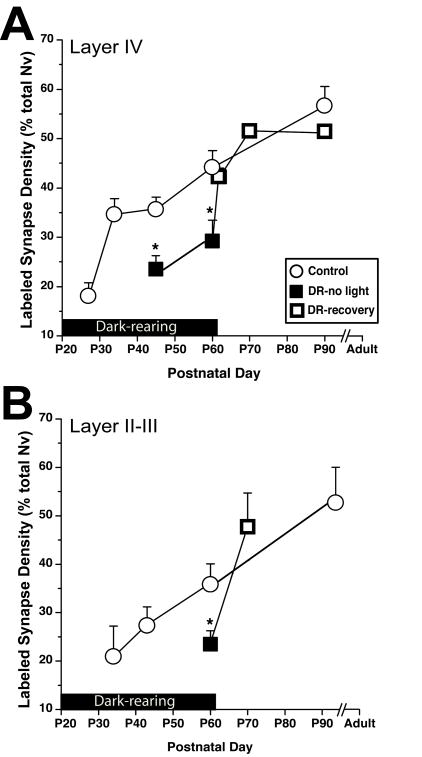Figure 3.
Sensory activity acutely modulates synaptic NR2A subunits during development. Prevalence of labeled synapses (Labeled synapse density as a percent ratio of total synapse volumetric density) is plotted for postnatal ages from before natural eye opening through adult ages. The black bar above x-axis marks the duration that the lights were off. This applies to both dark-reared animals (DR-no light; black squares) and the animals that were exposed to normal light cycle after dark-rearing (DR-recovery; open squares).
A) Compared to age-matched controls (open circles), dark-rearing both until P45 and P60 led to a smaller ratio of NR2A-containing synapses in layer IV. Two days of light exposure after dark-rearing was sufficient to return NR2A levels to normal. **=p<0.001
B) In layer II–III of dark-reared animals, the ratio of NR2A-containing synapses was significantly lower than control animals at P60. **=p<0.001

